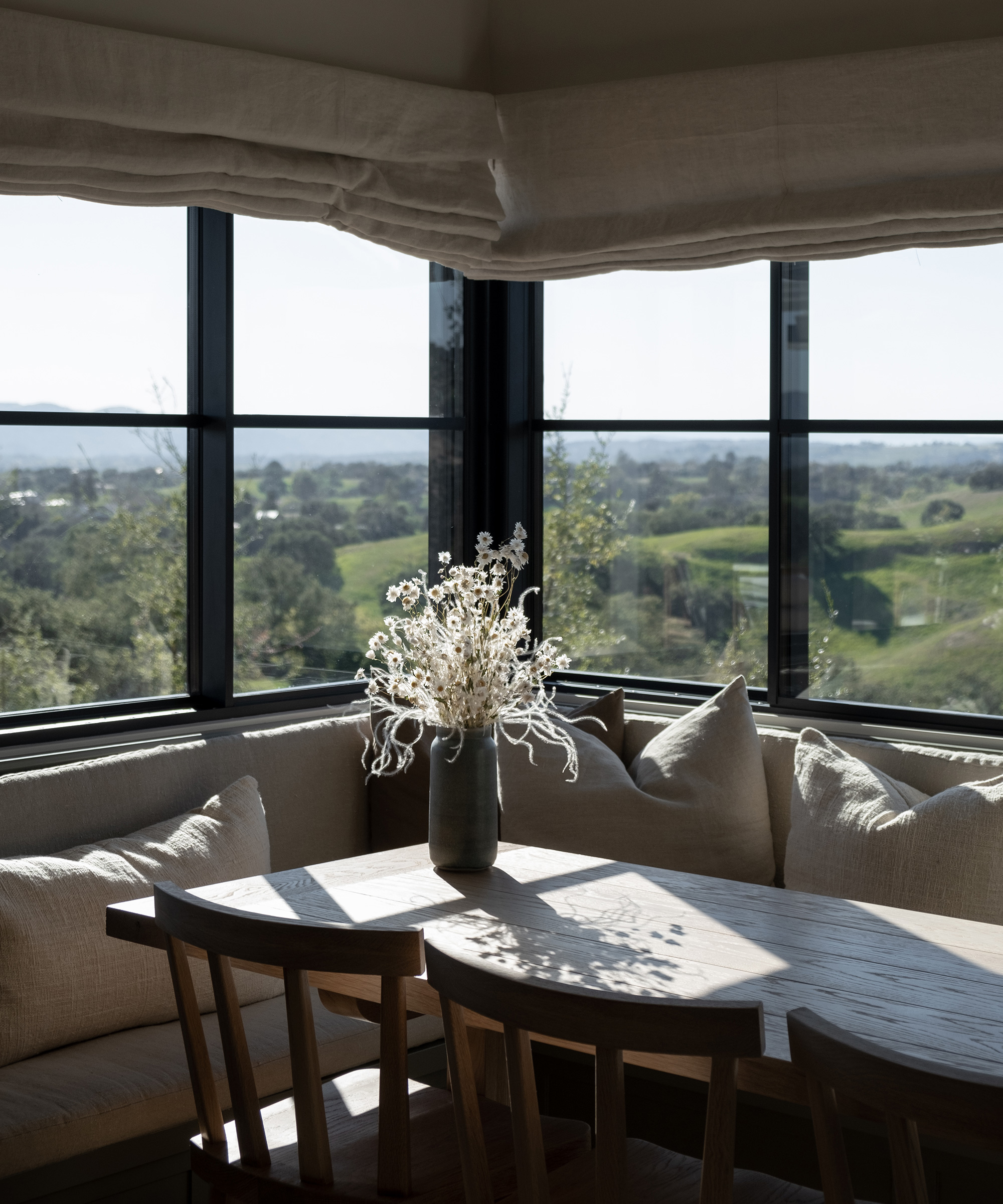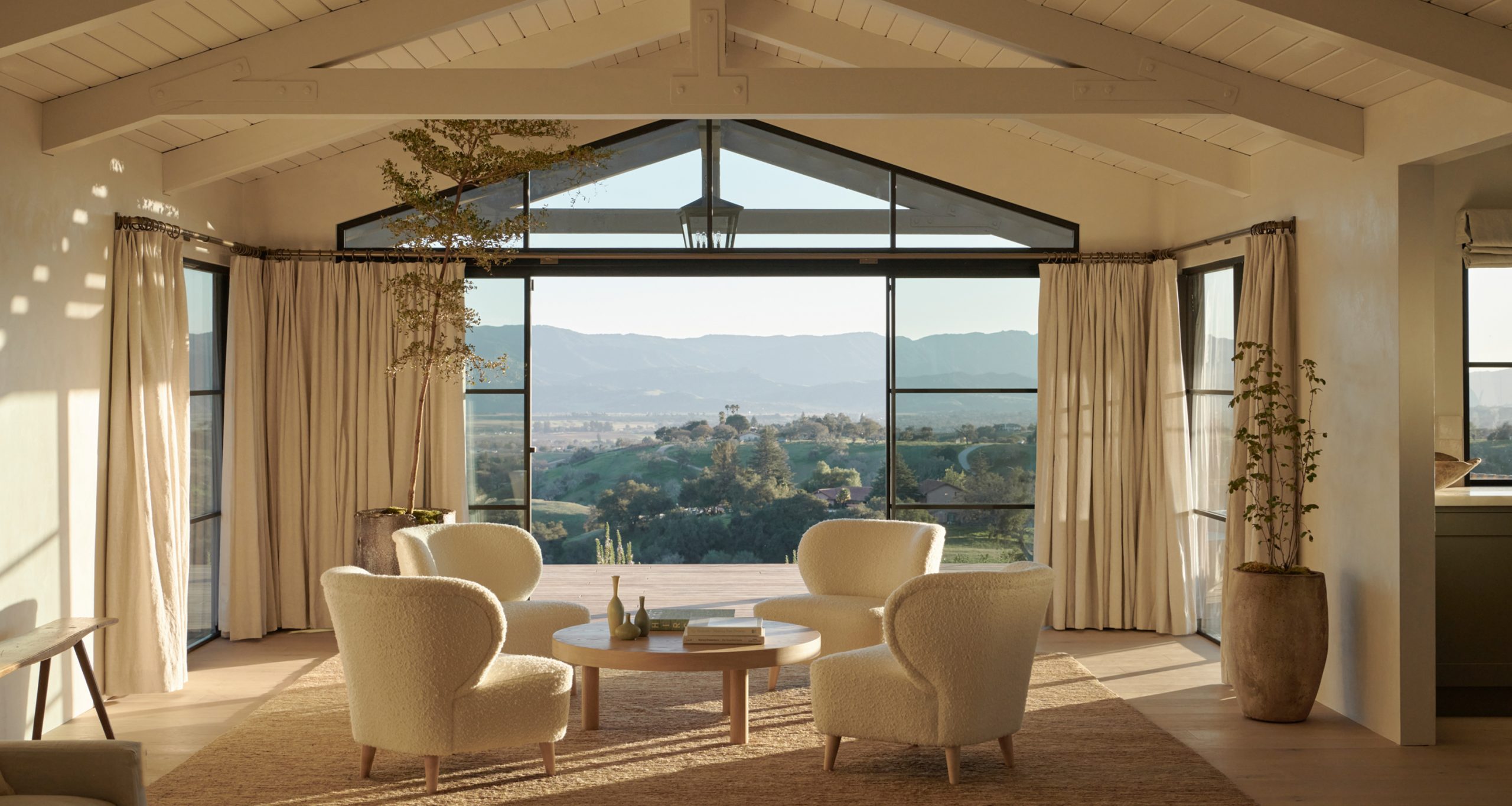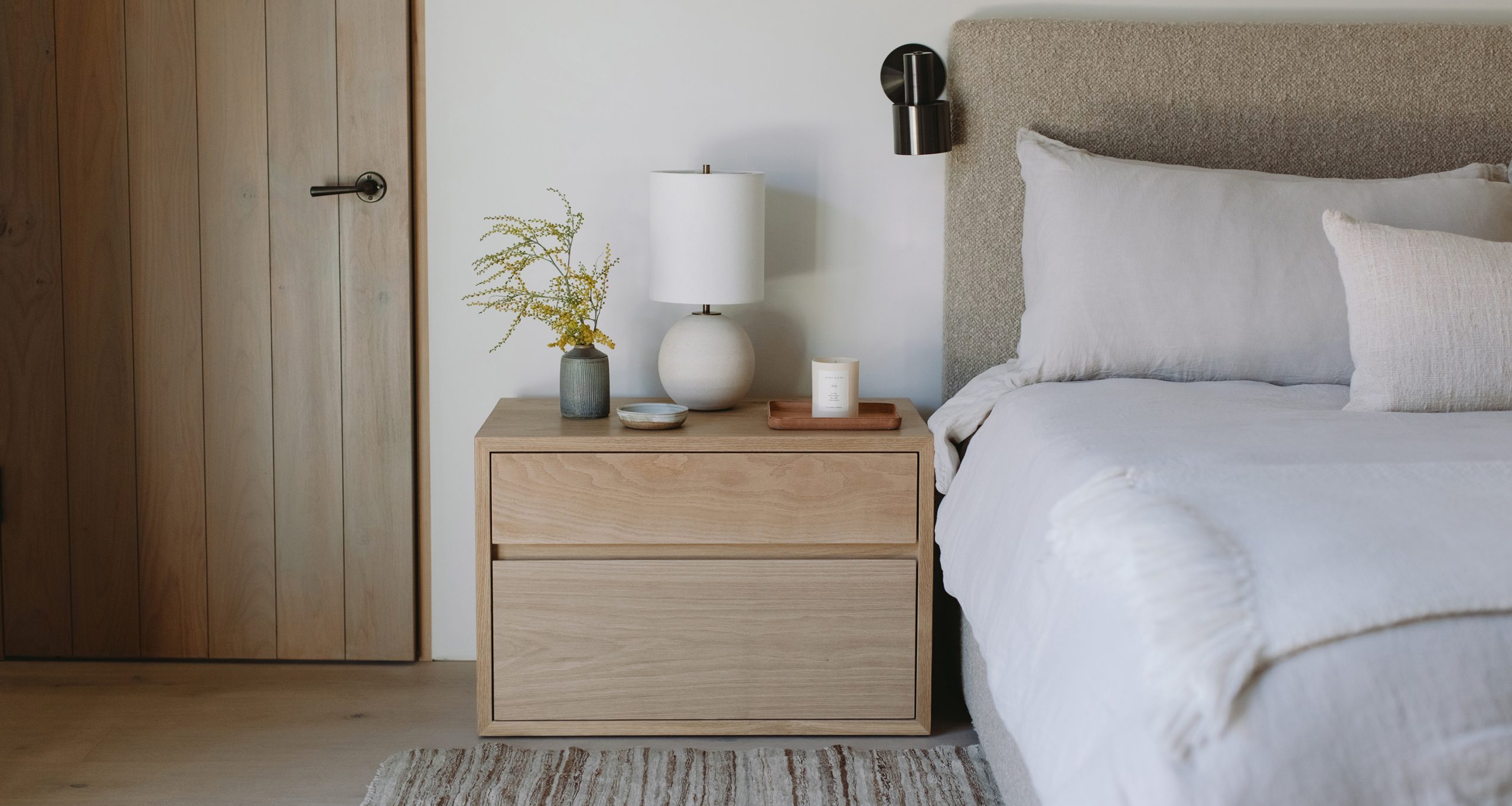How to Find the Right Window Treatments for Any Space
Translation missing: en.blogs.article.author_on_date_html
Living
How to Find the Right Window Treatments for Any Space
May 23, 2022
It’s a truth universally acknowledged that a space abundant with windows and flush with natural light is any interior designer’s dream. However, as important as it is to let the light in, any home should just as easily be able to shut the world away for a bit—and that’s where modern window treatments come in. From fixtures to fabrics, finding the right style for your home can be overwhelming, which is why we spoke with Davina Ogilvie of Wovn Home—proprietors of all shades and drapes at the Jenni Kayne Ranch—in the hopes of compiling an in-depth guide to approaching shades in any space. For her expert breakdown as well as inspiration that’ll go far beyond windows, read on—and be sure to bookmark for future reference.
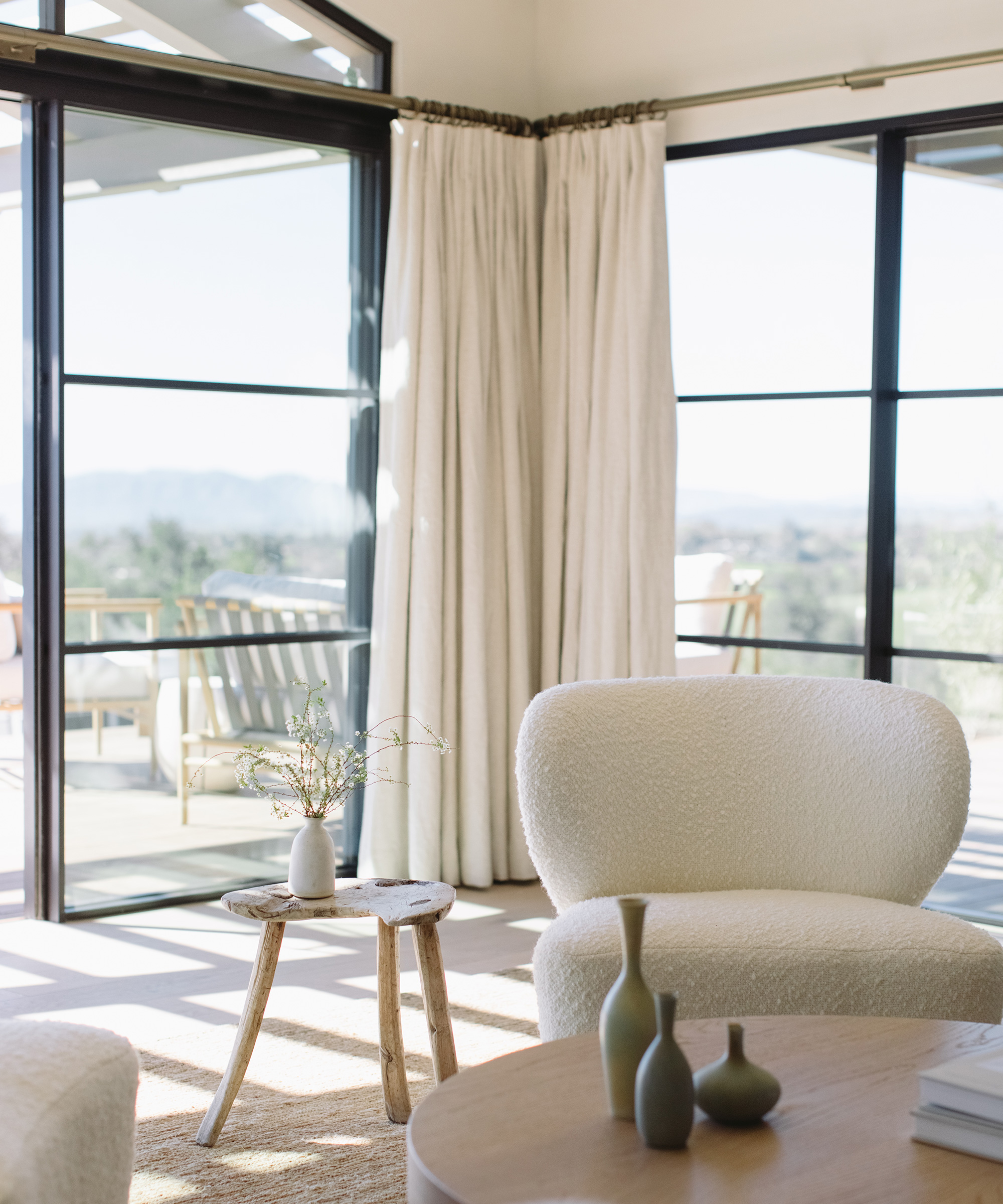
How to Find the Right Window Treatments for Any Space
Rip & Tan: From drapes and blinds to curtains and shades, can you break down the different types of window treatments? What does each one bring to a home?
Davina Ogilvie: Roman shades are made with fabric that folds up into pleats as you raise them. They can be made in more modern, streamlined-looking styles or more traditional styles. But ultimately, all Roman shades are made with fabric, and one of the key reasons to choose this window treatment type is its ability to soften the look of a space and make it look tied together.
For example, in a kitchen or bathroom where there is a lot of stone, tile, and other hard surfaces, Roman shades for a kitchen goes a long way to soften the room and make it look finished and polished. There are a range of options to choose from—linen roman shades, blackout roman shades, cordless roman shades and so on.
Unlike curtains, drapes usually refer to fully lined, custom-made panels that incorporate additional fabric fullness for pleating and beautiful draping.
Rip & Tan: What are some underutilized or unexpected ways we can use window treatments to elevate a room?
Davina Ogilvie: Drapes are magicians of disguise if you want to minimize an unappealing architectural feature that’s been bugging you! I also encourage thinking beyond the window—for example panels used behind a bed create a pretty backdrop and create instant luxury in a bedroom. I also recommend living room drapes for added texture and coziness in the space.
Rip & Tan: What’s a good rule of thumb when deciding which window treatment is right for your space? Do you have any general guidelines for choosing window treatments for specific rooms?
Davina Ogilvie: Given their scale, drapes can often become the focal point of a room. For that reason, rooms with high ceilings or ample space will benefit from drapery versus other window treatments. Spaces that have taller or larger windows tend to better support drapes, as small or narrow windows can be easily overwhelmed by the amount of fabric. This usually means that living rooms and dining rooms are a good fit for drapes.
Roman shades are a go-to choice for smaller windows and spaces because they don’t occupy the same footprint as full-length drapes. Bay windows or windows that have built-in cabinetry, furniture or heating/cooling units below them are great places for Roman shades, as positioning drapes around these obstacles can look awkward or make them difficult to open and close.
Roman shades tend to be the favored choice for rooms that can’t support the formality of drapes, such as kitchens, bathrooms, and powder rooms. Custom roman shades work well in these smaller windows as they occupy less space around the window. They’re prized for their streamlined aesthetic, giving a room much-needed texture and character without overwhelming the space. Plus, they offer an easy, unobtrusive way to insulate a home while providing a measure of privacy.
Rip & Tan: We know that measurements are a must when it comes to window details. What’s the optimal length for drapes? How do you decide where to install the rod? Are there any tricks to employ to make a window look larger?
Davina Ogilvie: You can use drapery to play with scale, visually elongating a room depending on where they are installed—at the crown molding or lower depending on the effect you want to create. As a general rule, installing drapery at least 8” above the top of the window trim draws the eye up giving the illusion of higher ceilings, and for even more drama you can hang them just below the ceiling or crown molding.
Having drapes that hit just above the ground (about ¼”) is optimal if you want to open and close your lined drapes regularly; if you’re aiming for a more luxurious and dramatic look, opt for longer drapes that “puddle” at the bottom by a few inches. This works well if the drapes are more decorative and won’t be opened and closed a lot.
One thing to keep in mind is when it comes to custom drapery, it’s always a good idea to invest in a custom curtain rod that will be able to support your drapes properly. Custom drapes are much heavier than off-the-shelf curtains as they use more fabric to create fullness and are often lined. A telescoping rod will usually not be strong enough and sag in the middle with the weight of custom draperies. Custom rods however are made of solid strong material, usually iron or steel, and cut to the exact length needed.
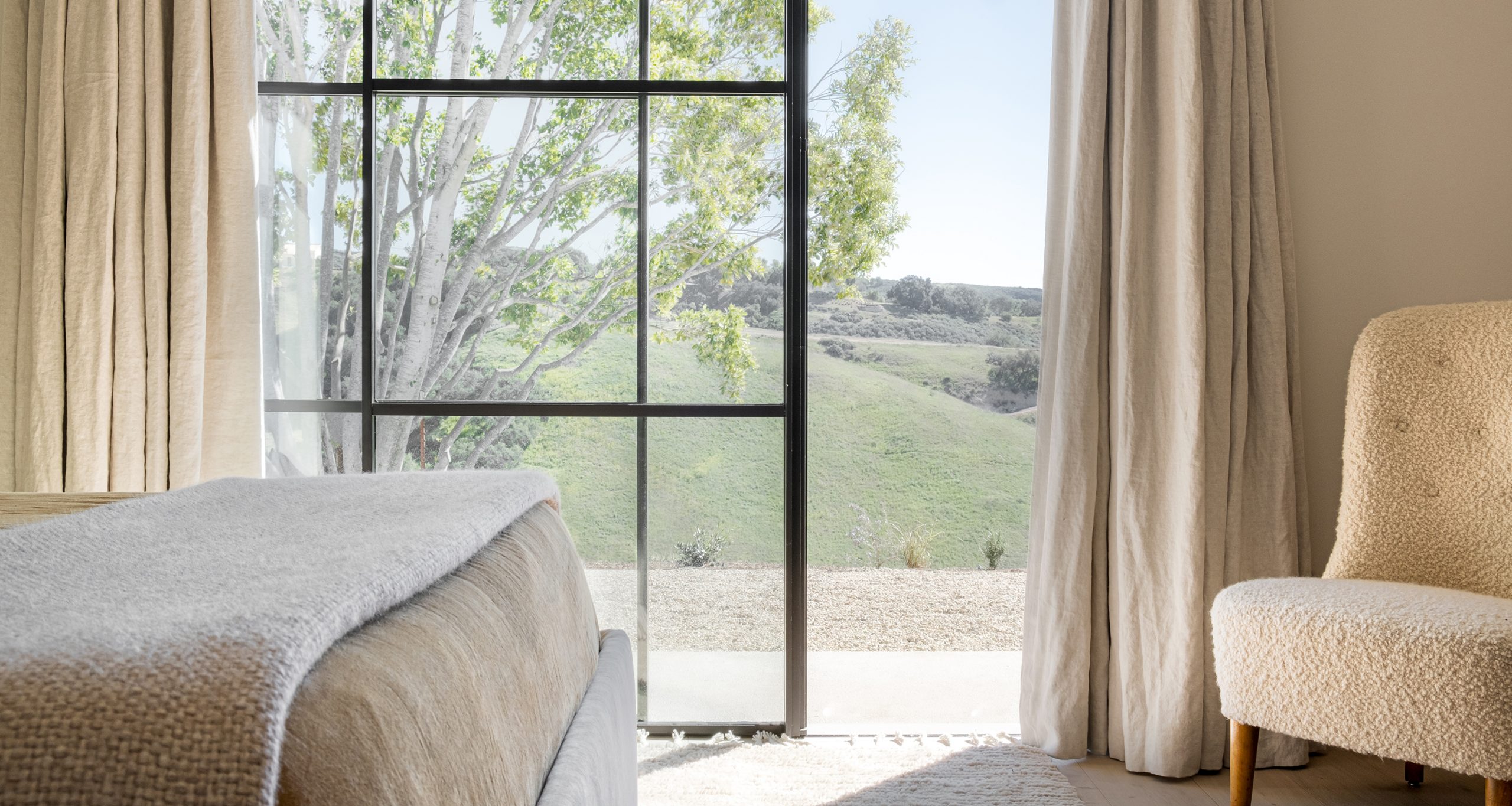
Rip & Tan: How should window treatments function within a room’s color palette? Are there certain materials you gravitate towards?
Davina Ogilvie: As with most choices in interior design, deciding how you want to dress your windows is a personal decision and an important one. Window treatments truly complete a room and elevate the rest of the décor—they are like the icing on the cake and help soften and tie other elements together.
I recommend looking for a piece that excites you, and one you want to make a focal point in your home—a sofa or fabric for example—then pick out the other elements that speak to that focal point. Using this approach will make your design come together in a meaningful, cohesive way. For example, if you are using a vibrant color for your sofa, you can use a more subdued color for a Roman shade or drapes and use that same sofa color as a contrasting trim on the window treatments to tie it all together. If your décor is neutral, you could go with bold printed fabric to dress the windows. That push/pull will make your décor feel connected and engaging.
At Wovn Home, we carry Belgian linens and linen blends because of the materials’ organic, beautiful texture, and versatility—It drapes beautifully as window treatments, is durable, long-lasting, and holds color beautifully.
Shop the Story
Photos by Amanda Sanford Angi Welsch and Olivia Pierce

